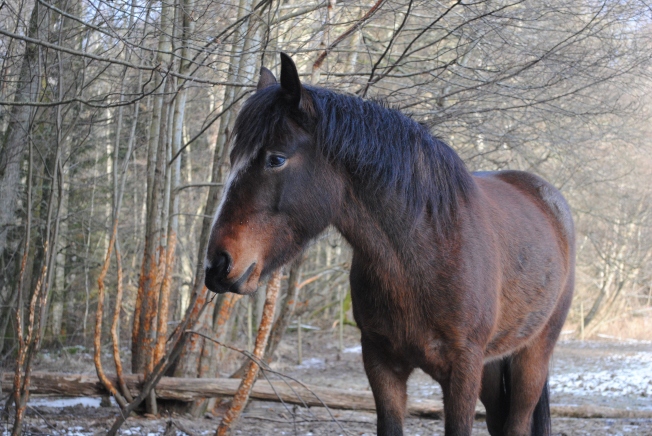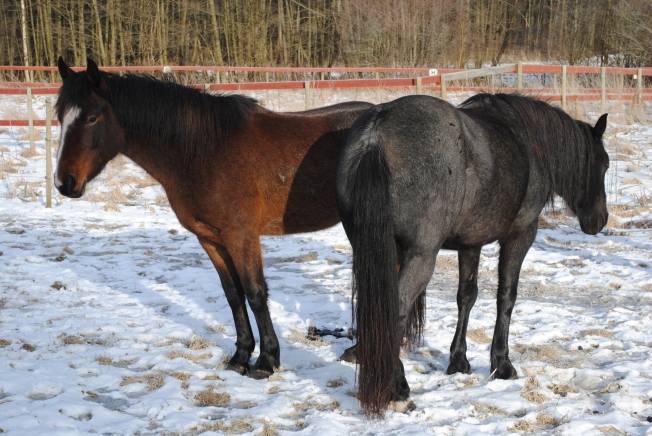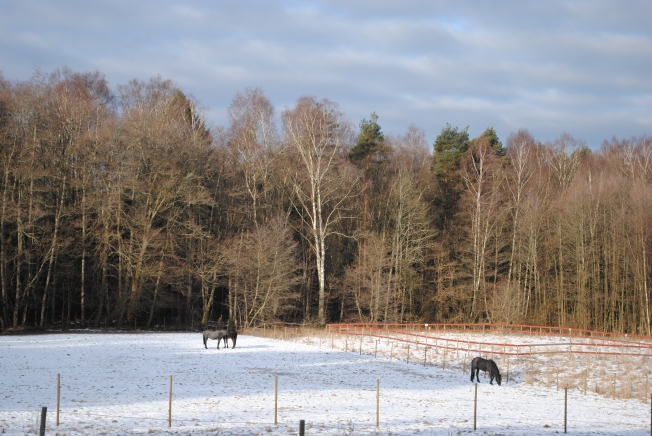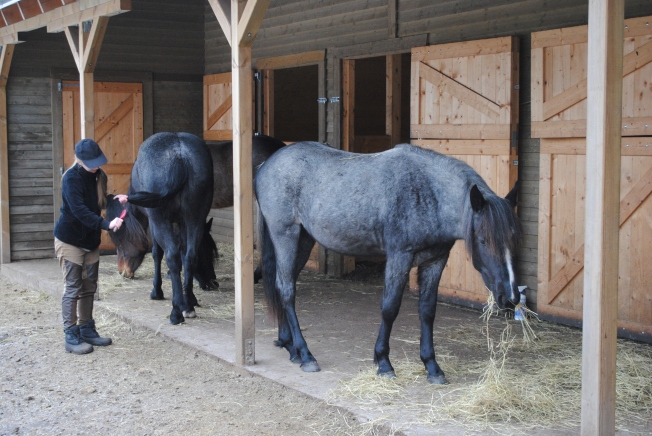Amino acids are building blocks for proteins and therefore essential for all kinds of cells. They play an important role in biosynthesis (a process in cells by which substrates are converted to more complex compounds). Amino acids, in the form of proteins, are the largest component of the horse’s body, except for water. There are a number of protein building amino acids, some of them cannot be synthesized by the horse body itself so they must be ingested, therefore called essential amino acids.
A normal diet contains all necessary essential amino acids a horse generally needs, but knowing about amino acids confirms the view that it is important to provide a wide range of different plants for the horse to choose from. Hay or forage of a monotonous composition is usually not good enough; horses do benefit from the delicate smörgåsbord a varied pasture provides.
The essential amino acids for horses are: arginine, histidine, isoleucine, leucine, lysine, methionine, phenylalanine, threonine, trypto-phan, and valine. Three of them (lysine, methionine, and threonine) are often referred to as limiting amino acids, which means all three must be sufficiently present or the other amino acids in the food can’t be utilized.
Argnine C6H14N4O2 is a semi-essential amino acid (essential for young horses) found in milk, wheat and soybeans. It is important for cell division, healing of wounds, the immune system, release of hormones and for removing ammonia from the body.
Histidine C6H9N3O2 is found in milk, soybeans and seeds. It is important for the myelin sheets that are protecting nerve cells, also needed for production of red and white blood cells. It may assist in removing heavy metals from the body. Histidine is transformed to histamine which protects against allergic reactions. Copper and methionine may lower blood histamine levels.
Isoleucine HO2CCH(NH2)CH(CH3)CH2CH3 is abundant in soy beans. It can be stored in the body in high quantities.
Leucine HO2CCH(NH2)CH2CH(CH3)2 is a minor component in soybeans but is also found in most other plants and grains like wheat and oats. Leucine is utilized in the liver and most importantly in muscle tissue where it is known to stimulate the ability to synthesize proteins, to build and preserve muscles.
Lysine HO2CCH(NH2)(CH2)4NH2 is abundant in legumes and soy, but low in grains. It plays an important role in calcium absorption, building muscles, recovering from injuries, as well as the production of hormones, enzymes and antibodies. Lysine acts as a serotonin antagonist, which means it reduces anxiety. (Lysine deficiency leads to high levels of serotonin in the amygdala, which controls emotions and stress response)
Methionine HO2CCH(NH2)CH2CH2SCH3 is abundant in grains and other plant seeds, but low in fruits and legumes. There are studies that show it is important for reproduction, others that high levels may increase mitochondrial ROS and cause oxidative stress, or frankly put; damage cell structures, which can lead to different diseases. The content of lysine and methionine increases with protein content. Lysine and methionine is sometimes considered the limiting factor for growth among young horses, especially for foals up to 6 months of age. It may also be involved in the formation of keratin.
Phenylalanine C6H5CH2CH(NH2)COOH is the precursor for many compounds like adrenaline and the skin pigment melanin and various other compounds in the nervous system. It is present in milk.
Threonine HO2CCH(NH2)CH(OH)CH3 is an important component in collagen. Sesame seeds are one potent source though it is also found in most other plants.
Tryptophan C11H12N2O2 is found in most legumes, but also in oats and other plant seeds. It is a precursor to a series of very importnant compounds like serotonine, niacin and auxin.
Valine HO2CCH(NH2)CH(CH3)2 named after the plant Valerian, is available in soybeans and legumes. It is important for muscles and for the ability to get energy from the food 😉





It sounds like the horse needs the amino acids, essential in the human diet, as much as we do. And, health to everyone is important.
LikeLike
really informative; thanks
LikeLike
Do you know if horses are able to extract the amino acid threonine from sesame seeds? I am thinking about adding whole food vitamins and minerals to my horse’s diet rather than relying on a manufactured grain supplement. Thoughts?
LikeLike
Sounds like a good idea, though it is hard to know about the rate and also the the amounts needed, but that goes for artificial supplements too. A good forage made of different grasses, legumes and weeds, with all kinds of seeds is usually enough. Our horses toss the hay so the grass seeds falls down on the porch floor and then they eat the seeds first 🙂
LikeLike